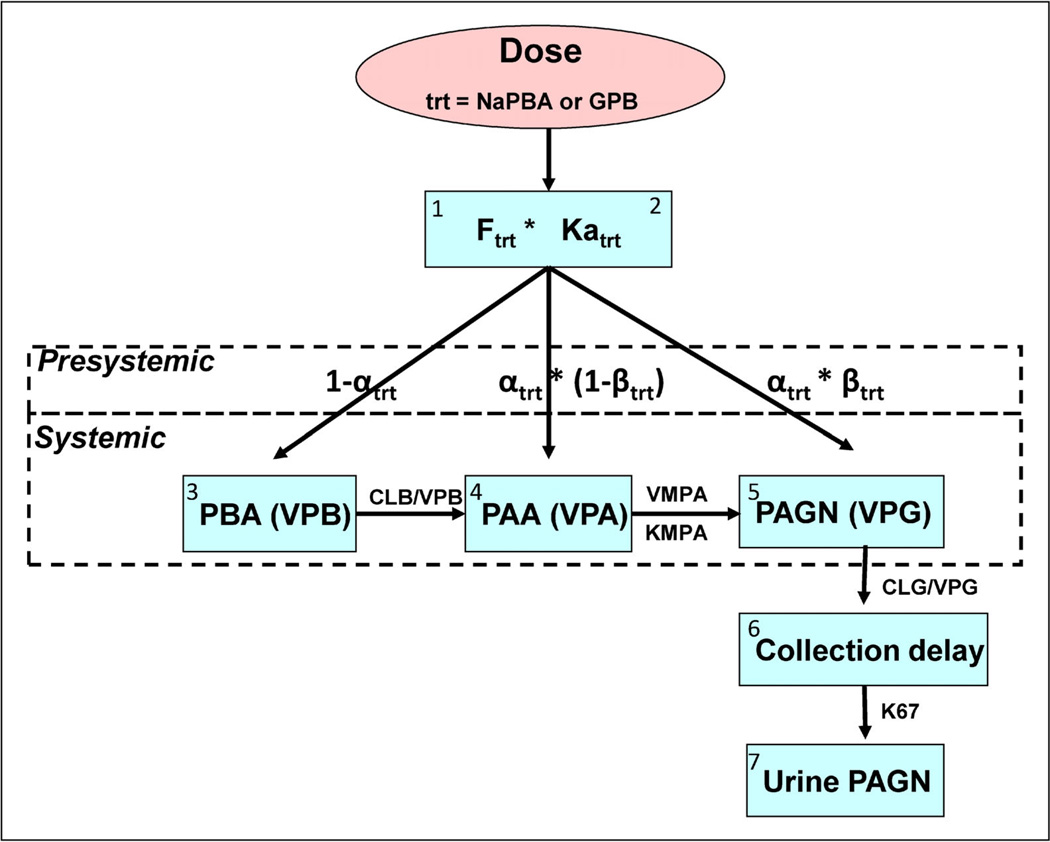Figure 1.
Simultaneous modeling of parent and metabolite data in plasma and urine following administration of two different treatments. The model approximated the biotransformation of GPB and NaPBA; including the absorption of PBA, conversion of PBA to PAA via β-oxidation, enzymatic conjugation of PAA with glutamine to form PAGN and the urinary excretion of PAGN. Conversion of PAA to PAGN is concentration-limited, saturable and described using a Michaelis–Menten relationship; whereas, the rate of β-oxidation of PBA to PAA was hypothesized to be linear due to the widespread prevalence of the enzymes. One hundred percent PBA to PAA conversion via β-oxidation was assumed, that is, no alternative metabolic pathways were included. The elimination rate for PAGN (CLG/VPG) was determined to be a linear process, consistent with renal elimination of PAGN. A delay rate constant (K67) was used to adjust for the delay between appearance of PAGN in the urine compartment and bladder emptying. This model incorporating partial presystemic conversion of PBA to PAA and subsequently to PAGN best described the data.

